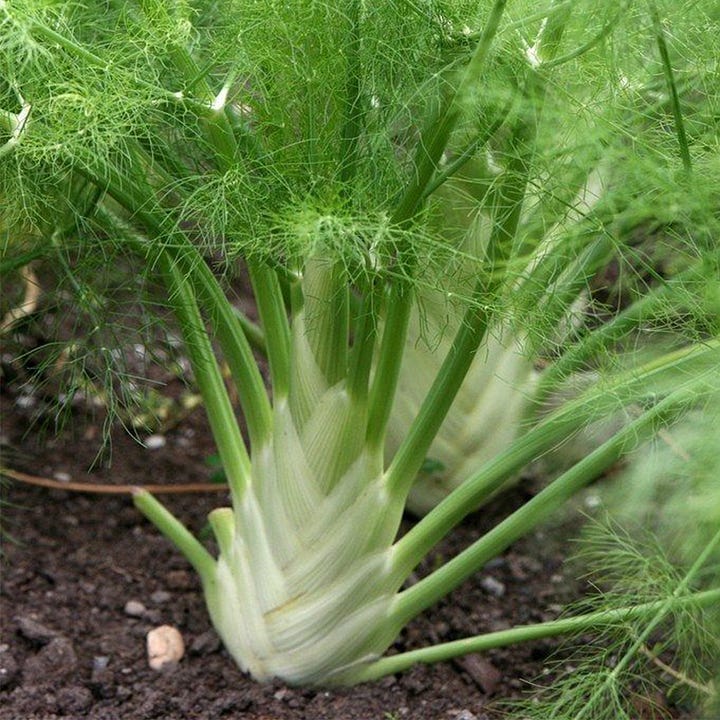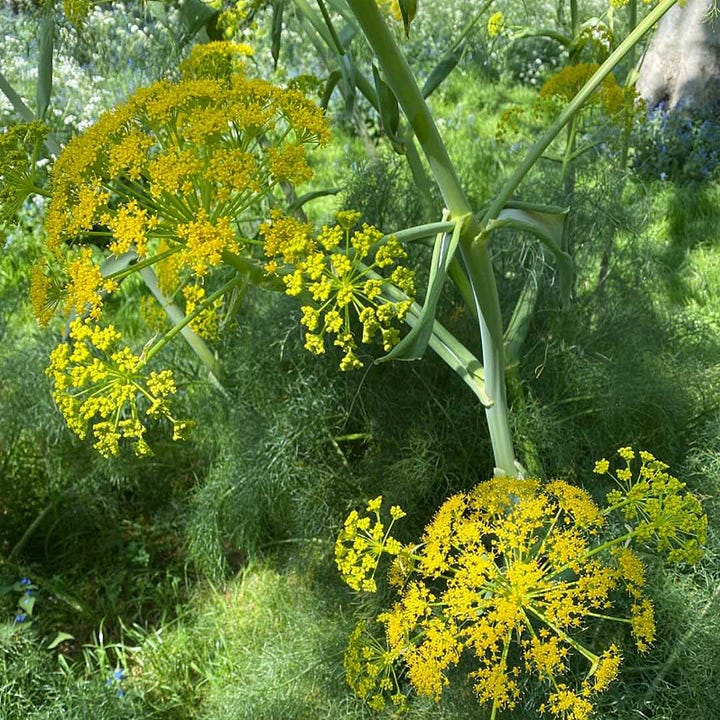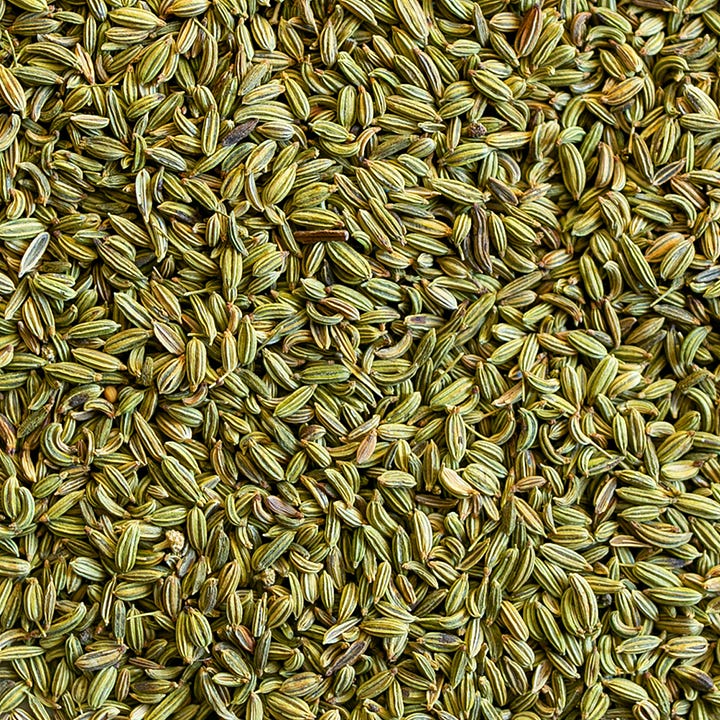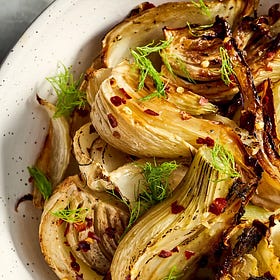Fennel
An invigorating vegetable and herb for the digestive system, it brings clarity of mind and stimulates inner vitality
Fennel is a balancing highflier for our nervous and digestive systems. It is primarily grown in two varieties, the bulb-like vegetable we find in most grocery stores (also known as Florence Fennel or Finocchio) and the herb variety (Wild Fennel).




Character
Fennel is both uniquely cooling and warming (read on, and we’ll explain). Its taste tends to range from sweet licorice-like to pungent and occasionally bitter, with an anise undertone to the aroma, depending on the particular part of the plant. And in fact, all parts of the plant can be eaten: the bulb, stalk, leaves, flower and seeds (fruit). The seeds are typically dried and eaten alone or in combination with a meal, while the bulb can be eaten raw, steamed, boiled or roasted.
Fennel Traits
Fennel, in all its forms, helps to calm down fire energy in the mind and nervous system (cooling traits), while stimulating digestive energy and soothing our gastrointestinal tract (warming traits).
It contributes to the growth, development and reproductive processes in the body.
Diuretic in nature, fennel can purge excess water weight and detoxify the blood. In some cultures it is used as a method for flushing the urinary tract in order to soothe burning sensations if they arise.
Fennel is estrogenic, and contains compounds known as phytoestrogens. It has been used to balance hormones, relieve menstrual discomfort and support lactation.
High in vitamin K, it is also considered a blood coagulant and provides additional support for bone formation.
Let us know how you enjoy fennel and the way impacts your state, in the comments below.
Harvesting Fennel
The bulb variety of fennel is a cool-season crop, preferring cooler temperatures and can be sensitive to bolting (premature flowering) in high heat. It is typically sown either in late winter/early spring and harvested in late spring to early summer, or in late summer and harvested in late autumn before the first frost. The herb variety is a perennial in warmer climates (regrows on its own after dying off in winter), and annual in cooler climates (must be replanted again in early spring). Its leaves are harvested throughout the growing season, typically from spring through early autumn, while the seeds are harvested in late summer to early autumn when the flower heads dry and seeds turn brown.
Nutrition
Fennel is an alkalising food that helps balance our blood acidity levels. Its PRAL score is one of the most alkalising, next to leafy greens. It also has a low glycemic load of 1, so it is unlikely to spike blood glucose levels whatsoever. It is therefore a sustainable source of nutrients for anyone with cardiovascular issues.
In its bulb form, it is primarily comprised of water (87%). Carbohydrates (8.5%) are the most abundant macronutrient, and have a relatively equal balance of dietary fibre and sugars, with protein making up 1.5% and fat 3%. This is a balanced, neutral food that is a great addition to a meal.
The main micronutrients are vitamin K (67% DV for 100g cooked fennel bulb) and the phytochemical anethole which is the primary component of fennel’s essential oil and is responsible for many of its aromatic and therapeutic effects (including mimicking the role of estrogen as well as relaxing gastrointestinal muscles).
Inflammatory Notes
Fennel in any form is a high estrogen food, so it might be prudent to avoid when you need to lower estrogen levels or if you are pregnant.
Fennel Recipes
Roasted Fennel
Fennel is one of my favorite vegetables to cook with. In the summer, I shave it raw into salads and throw it on the grill. In the fall and winter, I love adding it to crispy-creamy gratins and mixing it into Thanksgiving stuffing (I’m famous in my family for that one). But one of my very favorite ways to enjoy fennel in the colder months is also the eas…





Is fennel an anti inflammatory?